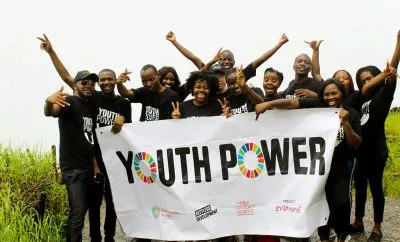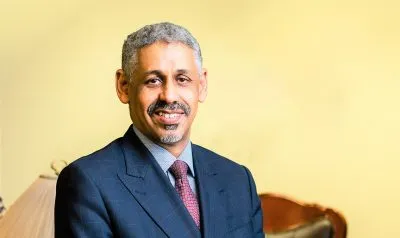The global landscape today is marked by a series of complex and interconnected crises that have significantly impacted economic stability worldwide. As economies gradually recover from recent disruptions, they grapple with persistent challenges that have led to uneven growth, exacerbating global disparities. Among these challenges, the alarming rise in global public debt has emerged as a major concern for the international community.
Although many African nations experienced a post-Covid economic rebound, geopolitical tensions and an overreliance on external resources have undermined their stability. Furthermore, rising interest rates and a strengthened US dollar have fuelled inflation and public debt, further straining trade balances.
African countries face difficult trade-offs between servicing their debts and pursuing essential development goals. In sub-Saharan Africa alone, governments paid approximately $84bn in debt service costs in 2021, while the Middle East and North Africa incurred debt costs of around $45bn.
The World Bank projects that by 2024, global debt service costs will increase by approximately 12%, with Africa expected to pay $163bn just to service its debts. Although debt servicing is projected to peak in 2024 before tapering off, it will still remain above pre-pandemic levels for the foreseeable future.
Interestingly, Alexander Hamilton, one of the Founding Fathers of the United States in the 18th century, posited that “a national debt, if it is not excessive, will be a national blessing.” Indeed, public debt, when managed effectively, can serve as a vital tool for development, financing expenditures that pave the way for a brighter future.
However, excessive debt translates into a heavy burden, hindering development efforts. The cascading crises of recent years have resulted in rapid debt accumulation globally, including in Africa. Alarmingly, approximately 3.3bn people now reside in countries where more is spent on interest payments than on education or health services.
Main components of Africa’s debt
The debt-to-GDP ratio in Africa is expected to remain above 60% in the medium term, compounding the existing financing issues stemming from soaring food and energy import bills, which the UN has classified as ‘the cost-of-living crisis of a generation’.
Consequently, African nations are forced to make difficult decisions: whether to allocate resources to debt servicing or to provide their populations with essential social services and public goods.
Africa’s external debt primarily consists of financial obligations to foreign creditors, including governments, international financial institutions, and private sector entities such as commercial banks. The recent surge in this debt category is largely due to extensive borrowing for critical development projects such as infrastructure, energy, and fiscal stabilisation measures aimed at boosting short-term growth.
However, reliance on external debt exposes countries to global economic fluctuations and currency exchange risks, complicating their financial management and economic planning. The depreciation of domestic currencies against the US dollar has further intensified the burden of debt.
Historically, African external debt was predominantly owed to official creditors, including high-income nations and multilateral institutions. However, the landscape has shifted, with a significant proportion now held by private creditors.
Currently, over 40% of Africa’s external debt is owed to private entities, a rise from 30% in 2010. Additionally, more than 20% is owed to bilateral creditors. This shift has resulted in higher borrowing costs compared to official loans.
In light of the challenges associated with accessing and managing external debt, domestic debt – borrowing in local currency on domestic markets – has become increasingly significant.
Estimates from the Economic Commission for Africa (ECA) suggest that the split between external and domestic debt in Africa is approximately 55.2% to 44.8%. Domestic debt generally has a shorter duration compared to a substantial portion of external debt, necessitating more frequent refinancing and potentially incurring higher costs, alongside rollover risks.
Transitioning from external to domestic borrowing may simply change one vulnerability for another. The expansion of domestic debt beyond sustainable levels can adversely affect economic growth by constraining credit availability for the private sector.
High domestic debt can also signal fiscal weakness to international investors, undermining confidence in a country’s financial health. Furthermore, through the fiscal-financial sector nexus, domestic debt can destabilise the financial sector, which is often the primary source of domestic borrowing for governments in several African nations.
On a more positive note, when managed effectively, domestic borrowing can cater to governmental needs and fund essential public goods. This includes providing support to State-Owned Enterprises (SOEs) in fulfilling their socio-economic mandates, with governments supplying the necessary capital for operations, infrastructure development, and financial stability.
However, guaranteeing SOEs’ borrowing means that governments must repay in case of defaults, further straining their already limited finances. Failure to meet SOE liabilities, even hidden ones, can lead to sovereign credit defaults, as illustrated by Mozambique’s experience.
Hidden debt, representing undisclosed liabilities incurred by governments or SOEs, poses a significant risk to African nations. These debts arise from opaque agreements or off-budget financing, making them challenging to track and manage. The existence of hidden debt creates unexpected financial pressures and poses growing fiscal risks, particularly for low-income countries already struggling with refinancing needs.
Managing debt in Africa
Given the increasing complexity of government borrowing and the elevated levels of public debt, African nations must establish and implement comprehensive debt management structures and processes.
Yet, many developing countries, including those in Africa, lack the necessary capacity – be it skills or resources – to manage public debt adequately. This inadequacy can lead to insufficient monitoring and analysis of debt, as well as difficulties in engaging with creditors and rating agencies, which can skew risk perceptions regarding investment in Africa.
To address these challenges, African governments must modernise their debt management approaches and learn from successful practices, both within the continent and beyond.
Establishing a centralised debt management office equipped with the necessary expertise, tools, and technology is crucial for conducting simulations and effectively communicating with markets. This measure is essential for returning to sustainable debt levels and improving sovereign credit ratings.
While progress has been made in debt management across Africa, several governments still struggle with transparency in their policies, particularly regarding the accurate reporting of debt levels and terms. This lack of transparency hampers effective debt management and undermines evidence-based policymaking.
African nations face common external variables that impact debt sustainability, including commodity price fluctuations, currency instability, and global economic downturns, all of which complicate the ability to meet debt obligations in the absence of accurate, real-time information.
ECA’s support for member states
The ECA, through its co-chairing of the High-Level Working Group on Global Financial Architecture, supports African countries in formulating a unified stance on critical debt management issues and amplifying the African voice in global discussions.
The ECA is also committed to capacity building within its member states by organising a series of peer-learning workshops designed for policymakers involved in debt management. These workshops facilitate the exchange of information regarding the current state of debt, key challenges to sustainability, and various debt management strategies.
Recent initiatives by the ECA include:
– A hybrid capacity-building workshop themed Debt Statistics for Effective Debt Restructuring, which has improved debt transparency among African member states while addressing major reporting issues.
– Workshops focused on domestic debt restructuring and clearance strategies, promoting macroeconomic stability while fostering equitable growth through transparent execution.
– Peer workshops aimed at strengthening the capacity of Ministries of Finance in managing increasing debt levels of SOEs, emphasising best practices in debt management, operational enhancements, and privatisation.
In conclusion, Africa’s public debt management challenges are multifaceted, requiring comprehensive strategies that address both domestic and external debt issues. By modernising debt management frameworks and enhancing transparency, African countries can navigate the complexities of public debt and work towards sustainable development.
The support from the ECA and the international community will be pivotal in
empowering African nations to overcome these challenges and achieve economic
stability.
Article produced with contributions from YARED ANTONIOUS TELLOREA in the Macroeconomic Finance and Governance Division
Want to continue reading? Subscribe today.
You've read all your free articles for this month! Subscribe now to enjoy full access to our content.
Digital Monthly
£8.00 / month
Receive full unlimited access to our articles, opinions, podcasts and more.
Digital Yearly
£70.00 / year
Our best value offer - save £26 and gain access to all of our digital content for an entire year!

 Sign in with Google
Sign in with Google 



